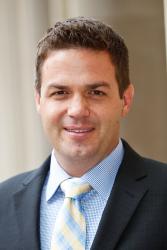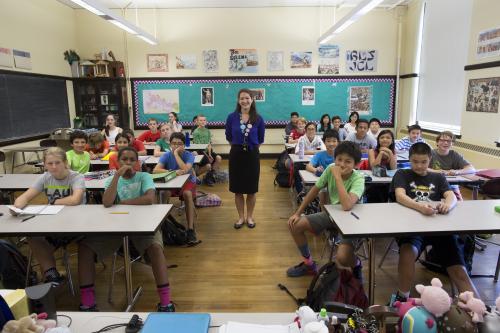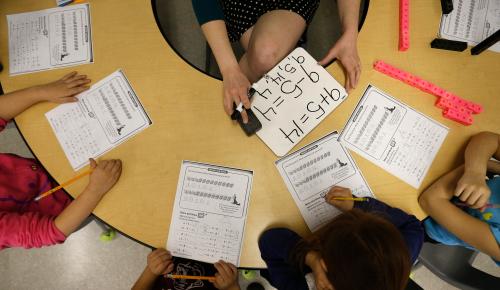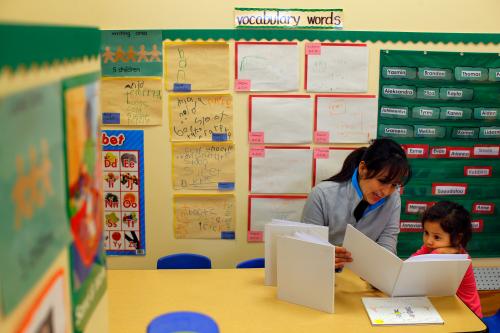This post is part of “Teacher diversity in America,” a series from the Brown Center on Education Policy that examines minority underrepresentation among public educators in the U.S.
The United States is undergoing a demographic shift in which the white population is aging while the younger generation grows more diverse. Although population estimates predict that white Americans will make up less than 50 percent of the population by 2045, nonwhite public school students already comprise more than 50 percent of the student body. This accelerated shift in the racial and ethnic composition of public schools, coupled with research showing the benefits to students from having nonwhite teachers, implies an acute need to diversify the teaching profession.
In light of these quickly changing demographics, our new report published through Brookings Mountain West delves into the diversity of the teacher workforce in the Mountain West region. The states in this region (Arizona, Colorado, Nevada, New Mexico, and Utah) have experienced rapid population growth and a substantial influx of nonwhite racial and ethnic groups in recent decades. These features put them at the vanguard of demographic change that the nation as a whole will be facing in coming years, and they make the region an interesting case study of teacher diversity—offering lessons to policymakers looking to diversify the workforce in the face of continued demographic change.
Growing racial diversity creates growing demand for teacher diversity
In the report, we use five waves of the Schools and Staffing Survey and the 2016 American Community Survey to plot student and teacher demographic trends from 1993 to 2016 in the Mountain West states. These trends show how the diversity in the teacher workforce has evolved slowly as the student population has changed more rapidly.
Figure 1: Student and teacher demographics in the Mountain West
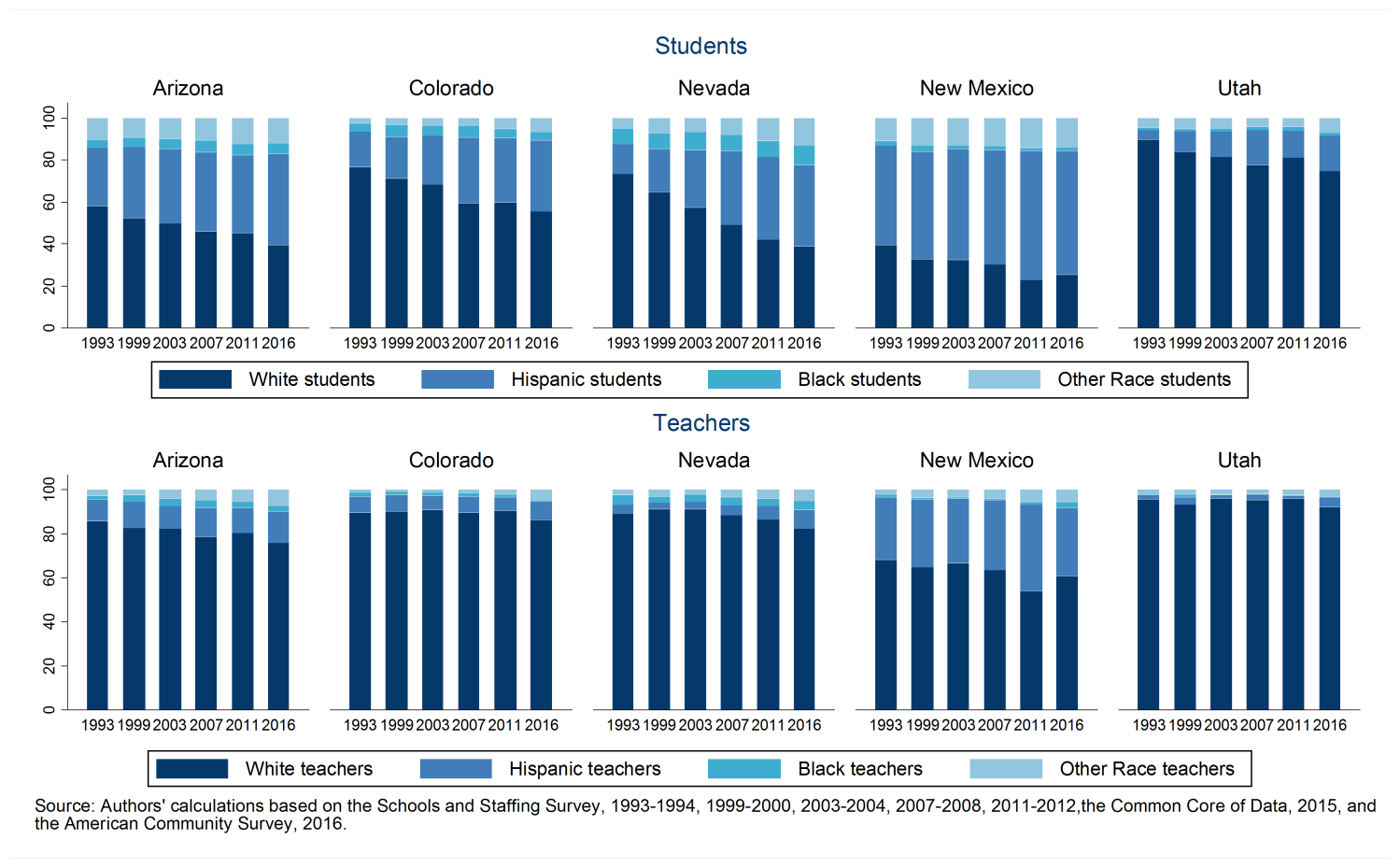
The charts in the top row of Figure 1 show that in all five states the share of nonwhite students, particularly Hispanics, has increased over the past 20-plus years. Both the initial share of Hispanic students and their growth rate varies by state. For example, the share of Hispanic students in New Mexico has always been large, accounting for nearly half of all students in 1993, and the growth of this group’s share has been positive but modest over the last 25 years. Meanwhile, Hispanic students in Nevada accounted for less than 20 percent of students in 1993, and this subgroup has seen dramatic growth since then, now constituting nearly 50 percent of all students.
Looking now at the share of nonwhite teachers across the bottom of Figure 1, we again see different trends arising across states. Due to the adult population being much more white than the rising generation of children under 18, it is not surprising that the teacher workforce is more white than the student body they serve in each of the five states. The trends presented here show that in all states nonwhite teachers are a scarce resource. However, some states are performing better on teacher diversity than others. While New Mexico and Arizona are leading the region, Colorado, Nevada, and Utah are struggling to keep pace with changes in the student population.
Next, we explore how the Mountain West states are doing in their recruitment and retention of nonwhite teachers in comparison to white applicants and the rest of the U.S. We find two noteworthy ways in which the Mountain West is clearly lagging behind.
First, a major source of diverse teachers in the rest of the U.S. is growing less racially diverse in Mountain West states. Alternative certification programs have been documented as a key source for attracting nonwhite and male applicants into the profession; however, we find that states in the Mountain West are diverging from this general pattern. Figure 2 shows the percentage of novice teachers (with three or fewer years of experience) who have entered teaching through a non-traditional route.
Figure 2: Percent of novice teachers entering through non-traditional pathways
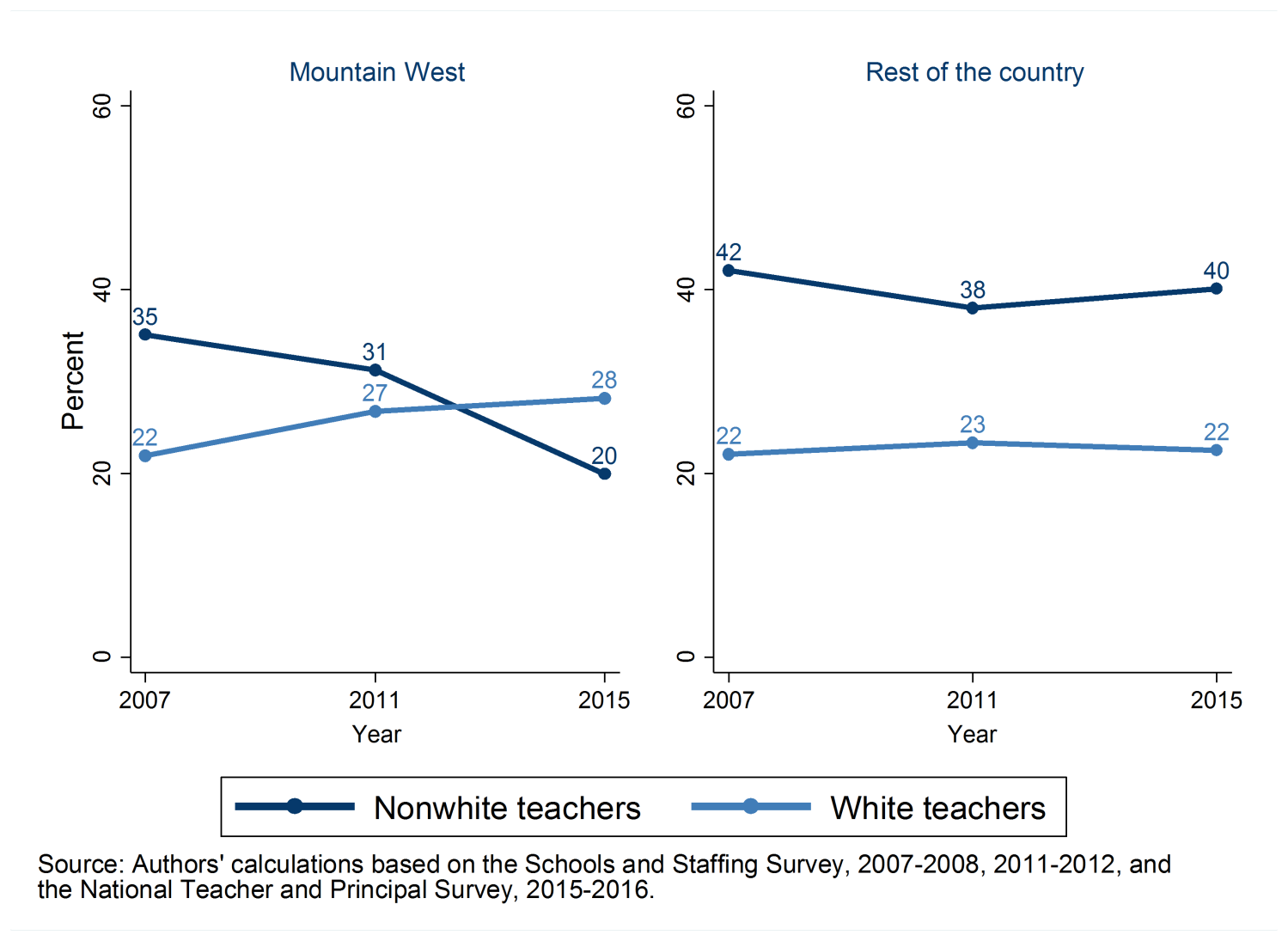
Nonwhite entry rates through alternative certification sit notably lower in the Mountain West states than in the rest of the U.S. In 2015, 20 percent of nonwhite novice teachers in the Mountain West enter the profession through non-traditional pathways, while 40 percent did in the rest of the country. Moreover, alternative entry rates in these states have declined among minorities and increased among whites such that their relative positions have reversed by 2015. By comparison, these entry rates are essentially flat in the rest of the U.S. for the eight-year span of these surveys. It is unclear why this source of racial diversity in the rest of the U.S. is becoming less diverse in the Mountain West states, but these trends warrant closer scrutiny if states intend to make progress toward parity in the region.
Second, we find evidence that nonwhite teachers leave Mountain West schools at elevated rates. In Figure 3 we show that the rate at which nonwhite teachers in the region left the profession in the 2012-13 school year is nearly three times higher than the one observed among both white teachers in the region and nonwhite teachers in the rest of the U.S. Though not pictured here, it’s worth noting that rates of moving between schools is equal for nonwhite teachers in both the Mountain West and the rest of the U.S. (11 percent). Thus, the high attrition rate observed in the Mountain West is not countered with lower mobility across schools and appears to be excessively high attrition unique to the region.
Figure 3: Percent of teachers who leave the profession
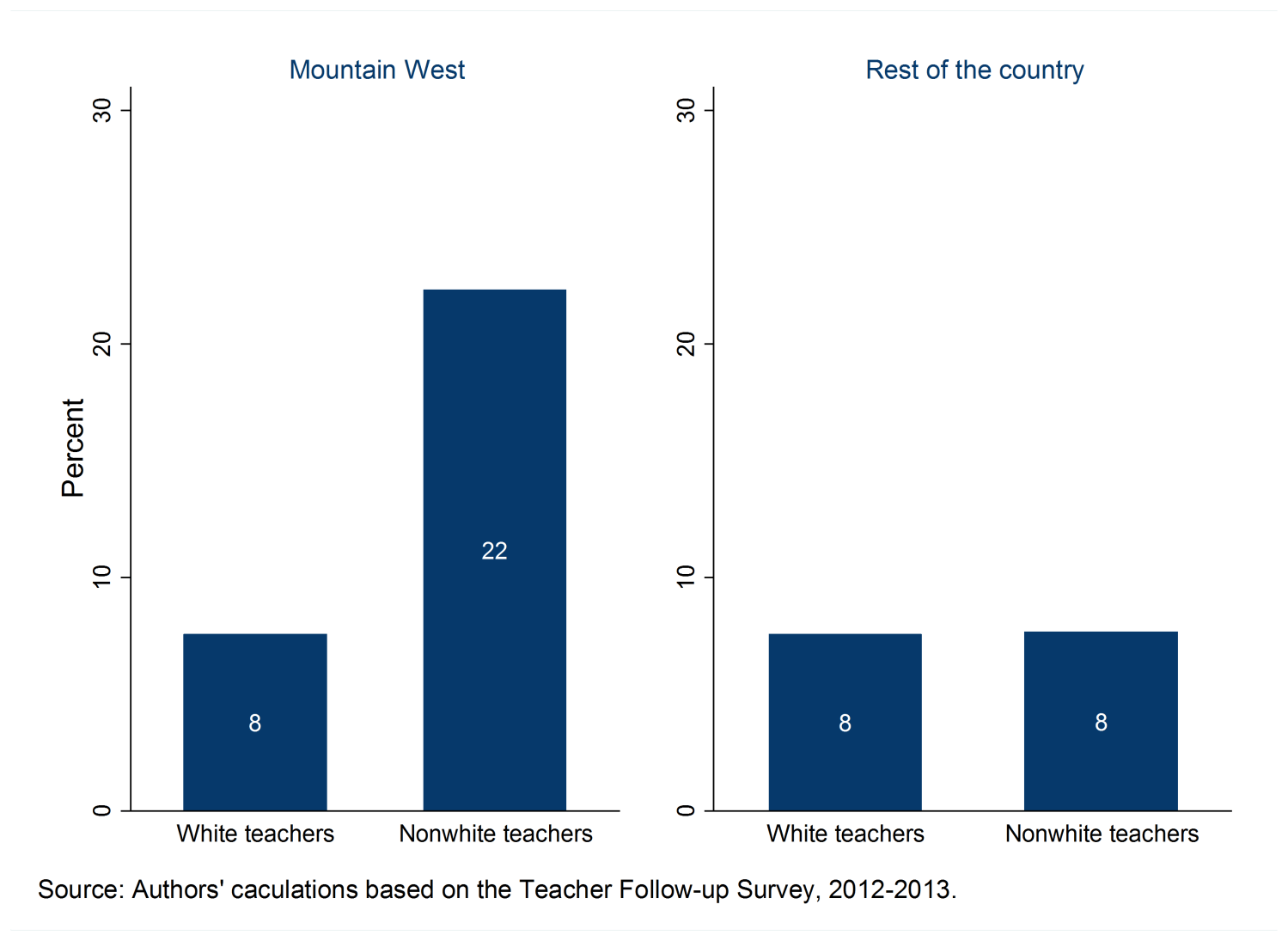
We have previously documented that attrition rates for nonwhite teachers are higher than attrition rates for white teachers in the U.S. Figure 3 suggests that attrition gaps in the Mountain West region alone may be responsible for these nationwide gaps. Whether it is creating more supportive work environments for nonwhite teachers, paying teachers in high-need schools more (which will benefit the disproportionately nonwhite teachers in them), or any other number of strategies, something clearly must be done to counter the hemorrhaging of nonwhite teachers from Mountain West classrooms.
Finally, though the demographic shifts in the Mountain West region are more acute than those observed in most other states, they are not unique to the region. Indeed, we expect that eventually most states in the rest of the country will face similar demographic transitions in their populations, though perhaps on a slower timeline. As a result, states across the country will need to work through multiple avenues if they seek to not simply keep pace with student diversity, but also intend to move closer to racial parity between teachers and students.
The Brookings Institution is committed to quality, independence, and impact.
We are supported by a diverse array of funders. In line with our values and policies, each Brookings publication represents the sole views of its author(s).
